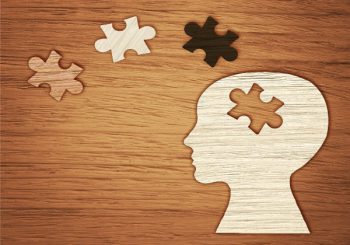By Nick Polizzi
Guest Writer for Wake Up World
If you look up the word “trauma” in the Dictionary, one of the first definitions you get is: a deeply distressing or disturbing experience.
I’m just taking a wild guess here, but I’d imagine that you’ve experienced something disturbing or distressing in your life. Am I right?
We all have! We’re adult humans and it’s a natural part of life. The problem is that many of us have experienced prolonged periods of emotional trauma or a brief but damaging physical trauma to our brain — and it wasn’t addressed or healed properly when it happened.
[pro_ad_display_adzone id=”110028″]
The scary fact is that most of us who have trauma don’t even know it.
I sure didn’t.
In my case, the first clue that something wasn’t right were the subtle triggers I started to experience. Hearing a friend chewing pizza loudly, or a falling broom clattering to the ground was all it took for me to see red. Little things like this would send me into a meltdown! I’d have to excuse myself and walk into another room to cool off. I figured it was more or less normal though — I mean, who wants to listen to a noisy chewer?
However, when a loved one gently took me aside and told me that my reactions were over-the-top, I knew I needed to investigate what was going on. Identifying my triggers was the first step in acknowledging my brain was hurting. There were other signs of a more spiritual nature too, like spiritual visions and out-of-body experiences. But that’s a story for another time!
Let’s focus on how to heal trauma in your brain. Here’s what I found truly transformed and accelerated my path to recovery.
Neurofeedback
Neurofeedback was an absolute game-changer in my brain healing journey. Neurofeedback is a therapy that assesses and offers feedback on brainwave activity. The program then uses exercises, sounds, and signals to reorganize unbalanced brainwaves. Studies have documented its success in repairing emotional and physical trauma, and the results really are astounding.
It’s a pretty powerful tactic to fast track brain healing, by basically retraining your brain to help it heal itself.
There’s an incredible neuroscientist right here in Boulder who’s also talented at offering neurofeedback in a therapeutic setting. She carried out a bunch of scans on my brain, with the results revealing that my poor noodle had suffered some substantial trauma. Luckily, neurofeedback goes beyond simply identifying an issue and making a diagnosis — it also presents a path towards healing and repair.
In our sessions, she rigged me up to an EEG and neurofeedback module so I could see my brain waves on live monitors in real-time. This way, I was able to watch which regions of the brain were firing well – and which ones weren’t. Having this visual evidence right in front of me enabled me to retrain my brain by changing my mental state of awareness.
What’s most fascinating, though, was how I was taught to calm down those erratic brain waves. Simple breathing and consciousness exercises — that’s all it took to help tone down unwanted brain overactivity in my sessions.
When you can actually see the imbalances in your brain playing out on the screen, you also see how quickly and effectively meditation gets those scrambled brain waves under control.
So let’s hone in on meditation now — what exactly is it about meditation that’s so beneficial for the traumatized brain?
Meditation
I’m a dedicated meditator, and always ready to sing the praises of meditation to anyone curious to try it. I knew meditation was incredibly powerful even before I started undergoing biofeedback for my traumatic brain injury. But when you actually visually witness your brain transform its traumatized wavelengths into healthy wavelengths in a matter of minutes, it’s irrefutable proof of its power.
If your brain has suffered trauma (and even if it hasn’t!), getting into the habit of daily meditation or mindfulness sessions can be life-changing. Traumatic brain injury impacts many aspects of life, and no two brain injuries are the same. Meditation is a multi-tasker that offers an assortment of benefits for those living with brain injury. For example, it improves memory and brain function, draws you right into the present moment, lifts your mood, and reduces symptoms of anxiety, insomnia, and fatigue. I got disciplined with sitting down every morning to breathe before work, and began noticing improvements in just a few weeks.
A 2020 study found that individuals with traumatic brain injury who meditate a lot experience notable brain behavioral improvements. The study also found that self-led meditation was just as effective as meditation with neurofeedback! So if neurofeedback isn’t an option for you right now, simply logging the hours on your favorite meditation cushion is still going to help enormously.
Healthy fats
The tides have turned on how we understand fat. After decades spent fearing fat and reaching for fat-free snacks, dietary experts are now stressing the importance of healthy fats for brain function.
Fun fact: the brain’s composition is more than 70 percent fat!
Brain health can be boosted by certain fats–particularly omega-3 fatty acids, which help with learning and memory. Omega-3 is found in fish such as salmon and sardines. If fish isn’t on your menu, you can also source omega-3 from nourishing plant foods like ground flaxseed, chia, and walnuts that are super easy to scatter on salads and in smoothies. Another crowd-pleasing brain food is cacao, rich in an antioxidant vital to brain health. You can easily get your cacao fix from dark chocolate (who knew healing the brain could be so delicious?)
Not all fats offer the same brain-boosting properties, however. Trans fats found in margarine, frosting, processed and prepackaged foods can actually contribute to inflammation, damaging brain cells over time. If you’re working on healing traumatic brain injury, steer clear of these fats.
So there you have it — it’s possible to eat your way to a healthier brain!
If there’s one thing that I’ve learned on my own path to recovery from brain injury, it’s that it’s a gradual process. The old adage is cliched but true: healing takes time.
The great news is that we can actively support and nourish the brain as it heals by engaging in the healthy practices discussed above — which contribute to a healthier life in general!
Stay curious,
Nick Polizzi
Recommended articles by Nick Polizzi:
- 5 Healing Herbs You Can Grow This Spring
- A Delicious Healing Flower and 3 Ways to Eat It
- 3 Powerful Indigenous Herbs from North America
- The Power of Fasting
- Three Ancient Beauty Secrets You’ve Never Heard Of
- The Art of Smudging: A Shamanic Cleansing Ritual
- Sacred Science: A Jungle Healing Technique You Can Use Anywhere
- 3 Wild Herbs for Lucid Dreaming
- Eye Gazing — An Exercise for Soul Vision
- 3 Ancient Medicines That Already Live In Your Home
About the author:
 Nick Polizzi has spent his career directing and editing feature length documentaries about natural alternatives to conventional medicine. Nick’s current role as director of “The Sacred Science” documentary and author of “The Sacred Science: An Ancient Healing Path For The Modern World” stems from a calling to honor, preserve, and protect the ancient knowledge and rituals of the indigenous peoples of the world.
Nick Polizzi has spent his career directing and editing feature length documentaries about natural alternatives to conventional medicine. Nick’s current role as director of “The Sacred Science” documentary and author of “The Sacred Science: An Ancient Healing Path For The Modern World” stems from a calling to honor, preserve, and protect the ancient knowledge and rituals of the indigenous peoples of the world.
For more, visit www.thesacredscience.com (where this article first appeared.)
[pro_ad_display_adzone id=”110027″]







